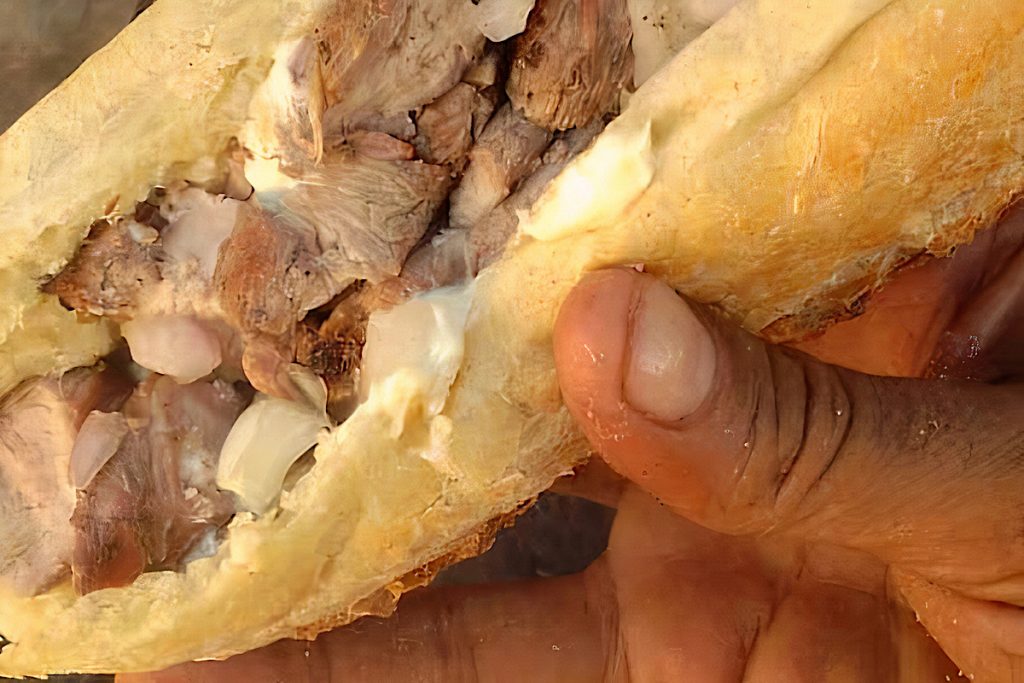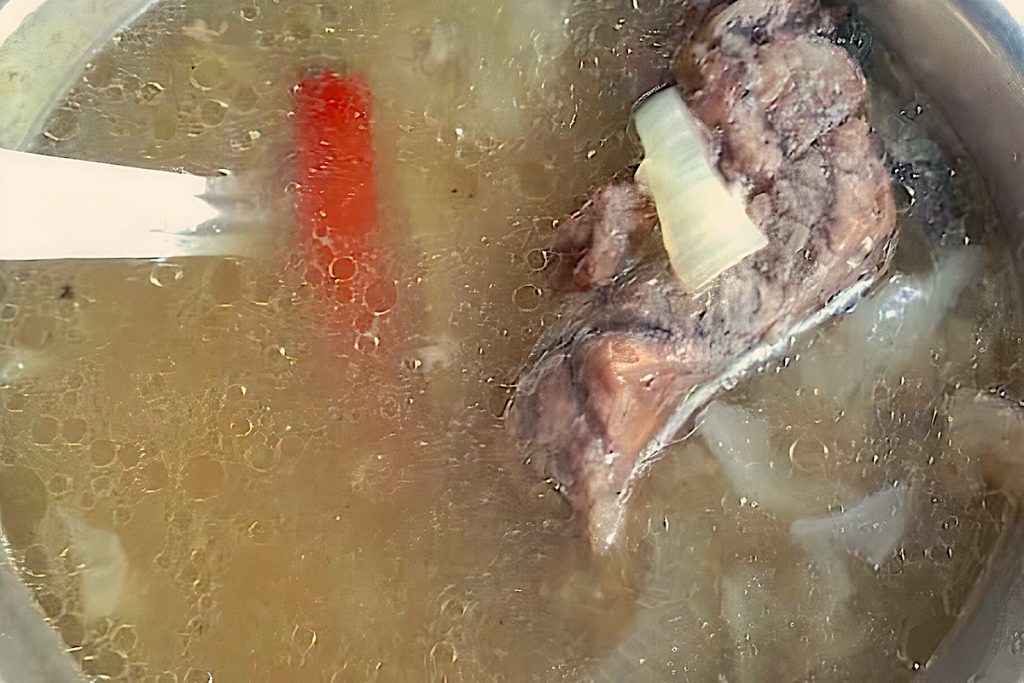Gambia bush pig, AKA warthog is healthy, sustainable, mostly organic, certainly free-range, cheap and delicious. Bush pig is also an important part of the diet for many of the Christians in The Gambia.
It’s not always available, even here in the provinces and increasingly much of what is caught locally is taken to the coastal area where it fetches a better price.
Luckily for me, a friend came past this morning. He had a couple of kilos as a treat for my dog Limpy and me.
Despite habitat depletion and being widely hunted, the common warthog (Phacochoerus Africanus) is abundant in the Southern part of West Africa where they roam the grasslands and savanna foraging for roots, fruit, insects, eggs and carrion.
Although it is locally known as ‘bush-pig’, this name more accurately refers to the slightly smaller and more elusive Red River Hog (Potamochoerus porcus), which is rare now in The Gambia. Source Wikipedia

Hunted for tusks
Bush pigs can grow up to 1.5m and stand almost a meter in height. Males have two sets of large fearsome-looking, upturned tusks. The lower, smaller two tusks are razor sharp and can inflict severe wounds on rival hogs or potential predators.
Until recently, when the market for its meat took off at the coast, it was the tusks that were wanted by the hunters, with the meat being either given away or sold for just a few hundred Dalasi.
Carved tusks are still popular with tourists in East and South Africa. Despite being so well-armed, a warthog’s first defence is to run away at speeds of up to 48km per hour.
Females tend to stay in groups with their young and other females. Young males remain in bachelor groups, leaving to live alone as adults. Mating season begins at the start of the dry season and females gestate for around six months. Then giving birth to a litter of up to eight piglets, but more typically two to four.

Warthogs are nomadic
Bush pigs are not territorial but they do roam over a large ‘home range’. Because of this nomadic lifestyle, the meat is very lean. Consequently, the two best cuts are the ribs and the rump, as they have some fat which keeps the meat moist and adds flavour. Today it was the rump – tail and all!
Cooking
After removing the skin, I cut the best pieces of meat off the rump and marinated them in vinegar, garlic, chilli, ginger and black pepper ready to go on the grill. With a big piece of meaty bone remaining, I decided to make soup.
Being too busy (or is that too lazy) to cross to Janjanbureh Island, I decided to manage with whatever I could get here in Lamin Koto. Onions, garlic, chilli, ginger and cabbage. Good enough.


While the soup slowly bubbled away to itself, I bought bread and mayonnaise. I then cooked the prime pieces of rump over the fire until the outside just started to get a deliciously burnt crust but the inside was still tender. With a few home-pickled onions, a sprinkle of salt and a squeeze of lemon I had the best pork baguette this side of Paris!
Anyone for soup?
Written by Dave Adams

